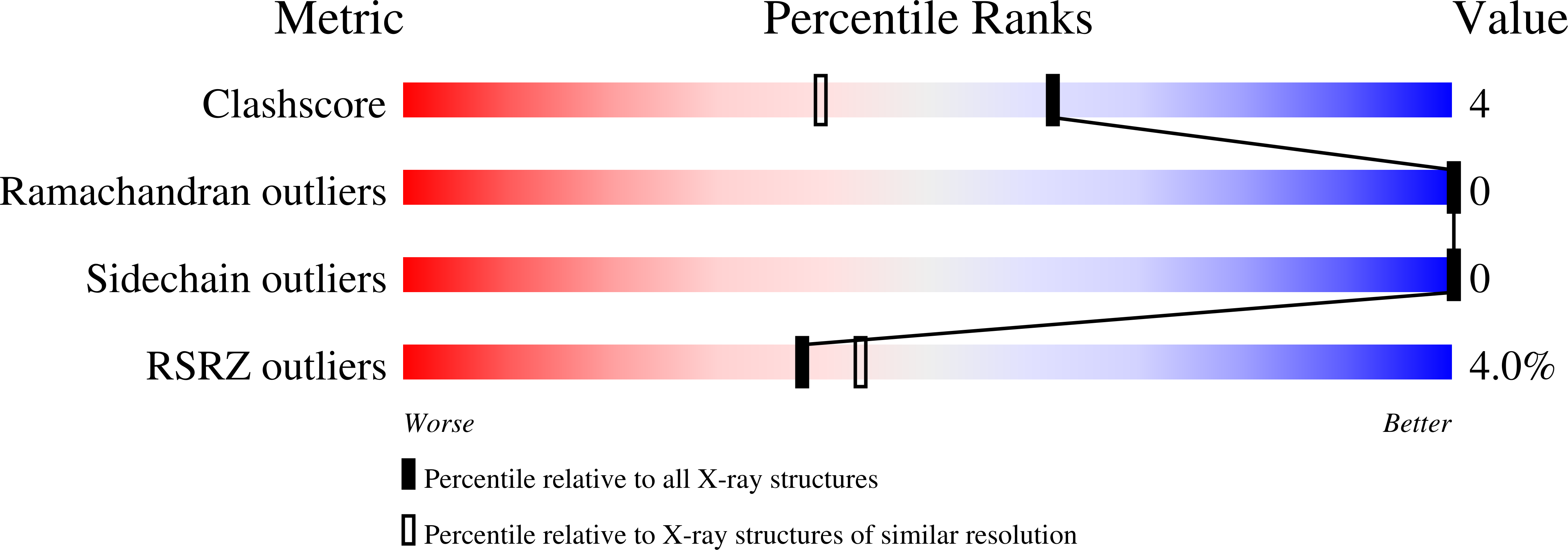Crystal structure determinations of oxidized and reduced pseudoazurins from Achromobacter cycloclastes. Concerted movement of copper site in redox forms with the rearrangement of hydrogen bond at a remote histidine.
Inoue, T., Nishio, N., Suzuki, S., Kataoka, K., Kohzuma, T., Kai, Y.(1999) J Biol Chem 274: 17845-17852
- PubMed: 10364229
- DOI: https://doi.org/10.1074/jbc.274.25.17845
- Primary Citation of Related Structures:
1BQK, 1BQR - PubMed Abstract:
The crystal structures of oxidized and reduced pseudoazurins from a denitrifying bacterium, Achromobacter cycloclastes IAM1013, have been determined at 1.35- and 1.6-A resolutions, respectively. The copper site in the oxidized state exhibits a distorted tetrahedral structure like those of other pseudoazurins. However, not only a small change of the copper geometry, but concerted peptide bond flips are identified. The imidazole ring of remote His6 has a hydrogen bonding distance of 2.73 A between N-delta1(His6) and O-gamma1(Thr36) in the oxidized protein. When the protein is reduced at pH 6.0, the imidazole ring rotates by 30.3 degrees and moves 1.00 A away from the position of the oxidized state. A new hydrogen bond between N-epsilon2(His6) and O-epsilon1(Glu4) is formed with a distance of 3.03 A, while the hydrogen bond between N-delta1(His6)-O-gamma1(Thr36) is maintained with an interatomic distance of 2.81 A. A concomitant peptide bond flip of main chain between Ile34 and Thr36 occurs.
Organizational Affiliation:
Department of Materials Chemistry, Graduate School of Engineering, Osaka University, Suita, Osaka 565-0871, Japan.

















